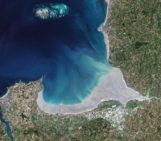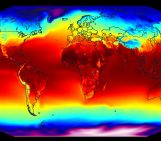
Neil Mancktelow published this Must-Read paper on the concept of “tectonic pressure” in 2008. The paper reviews previous work and theoretical concepts published on this fundamental topic. Additionally, numerical models that estimate the magnitude of tectonic pressure variations are presented for several realistic natural structures, such as folds, boudins, and inclusions. The premise of tectonic pressure is that the pressure distribution in heterogeneous rocks is neither static nor homogeneous, i.e., the absolute pressure varies in space and time. Further, pressure is dependent on external tectonic factors, e.g., extension vs. compression (Fig. 1). This concept implies that pressures extracted indirectly from the rock record, cannot be transferred easily to depth (i.e., assuming lithostatic pressure), while many geodynamic and tectonic models estimate, for example, subduction depths from pressure estimates that are based on the mineral assemblage. Mancktelow points out that much of the debate prior to his seminal paper in 2008 has focused on the magnitude that pressure variations may have, thus neglecting the role of tectonic pressure for commonly occurring deformation structures.
Several numerical models are presented throughout the paper that lead to the conclusion that tectonic pressure in heterogeneous rocks is inevitable, and that the main open question concerns the magnitude and whether such variations from lithostatic pressure are stored in the rock record or not. Using the discussion of previous works, and the presented numerical models indicates that pressure variations may be large in magnitude for weak materials that are confined by relatively strong materials, and that depending on the viscosity contrast between strong and weak material, deviations from lithostatic pressure up to GPa levels are feasible. Mancktelow further concludes that even for smaller magnitudes, considerations of tectonic pressure are relevant for “many common geological structures, such as vein formation, fluid flow, fluid–rock interaction and the development of ore-bodies” all of which are related to pressure gradients.

Fig. 1. Illustration of the general principle of tectonic pressure assuming the vertical pressure is constant, but varying horizontal pressure in a extensional (blue) or compressional (orange) setting (modified from Mancktelow, 2008).
As such, the paper provides an excellent background to the concept of variations from lithostatic pressure, as well as the physical basis to tackle such problems from a numerical point of view. Since its publication the paper has been widely referred to by later publications and to this day the way that pressure varies, and its impact on the information stored in the rock record are one of the fundamental questions in geology (e.g., Moulas et al., 2022). Tectonic pressure thus has implications for processes that range from geodynamically relevant scales (Schmalholz and Podladchikov, 2013) to the micro-scale and fluid-rock interaction (Putnis, 2021).
Sascha Zertani and the TS Must Read team
References
Mancktelow, N.S. (2008). Tectonic pressure: Theoretical concepts and modelled examples. Lithos, 103(1-2), 149-177. https://doi.org/10.1016/j.lithos.2007.09.013
Moulas, E., Kaus, B., Jamtveit, B. (2022). Dynamic pressure variations in the lower crust caused by localized fluid-induced weakening. Communications Earth & Environment, 3, 157. https://doi.org/10.1038/s43247-022-00478-7
Schmalholz, S.M., Podladchikov, Y.Y. (2013). Tectonic overpressure in weak crustal-scale shear zones and implications for the exhumation of high-pressure rocks. Geophysical Research Letters, 40(10), 1984-1988. https://doi.org/10.1002/grl.50417
Putnis, A. (2021). Fluid-mineral interactions: Controlling coupled mechanisms of reaction, mass transfer and deformation. Journal of Petrology, 62(12), egab092. https://doi.org/10.1093/petrology/egab092




